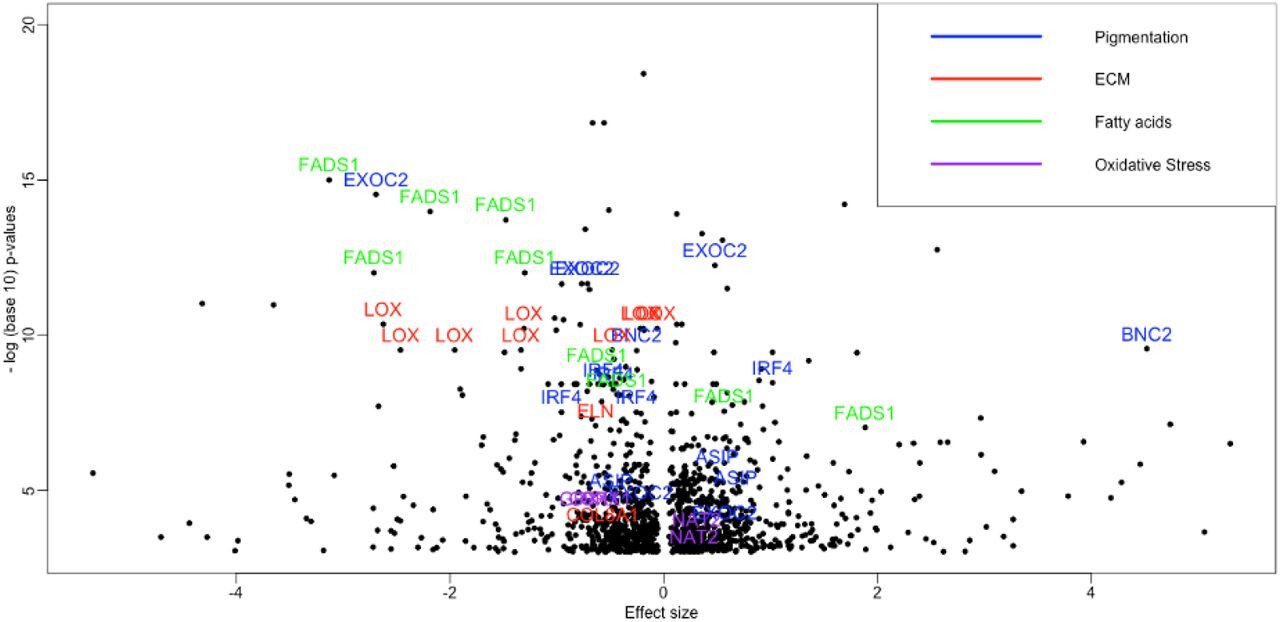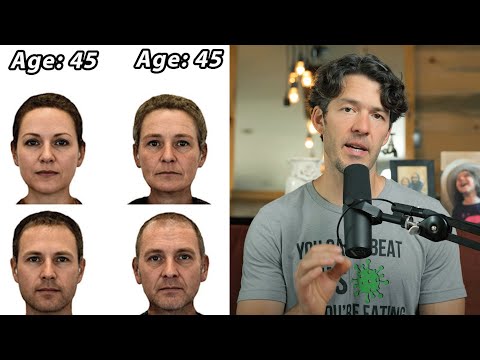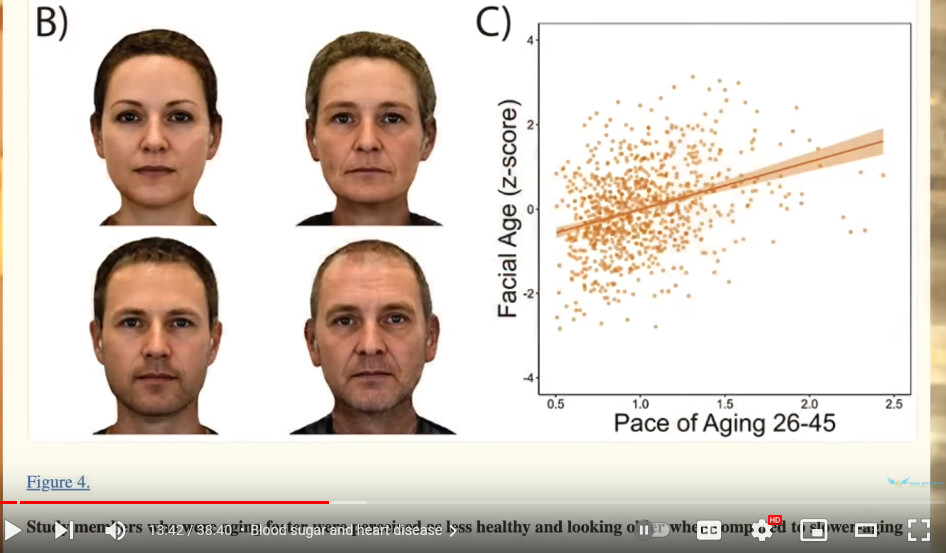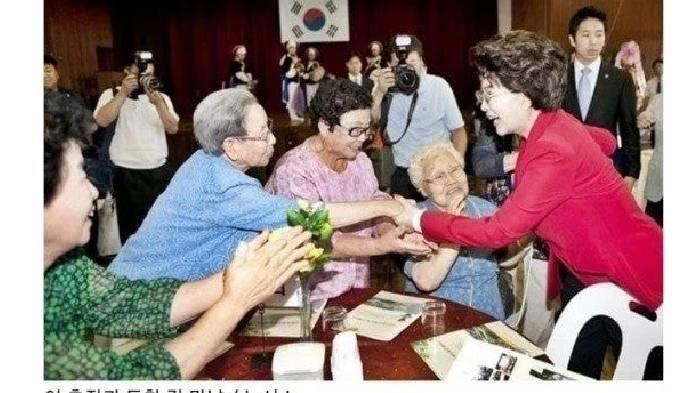They seem to age more slowly, but differences of +20 years are still rare. She’s famous in Taiwan for a reason (she does it way better than almost anyone)
My wife is from SE Asia (Indonesia). When we first met - I was 100% convinced she was 24 - turns out she was 34 (didn’t find out until 2 months into our relationship). That was 6 years ago and she hasn’t aged much (my appearance has aged faster - despite being a ‘health nut’ (her words)).
What’s her secret? It’s called genetics.
Her dad is 75 and still can sit down/stand up from the ground without using his hands - extremely mobile. Squatting, sitting cross legged on the floor, never sits still always active. No aches and pains.
Her sisters all look 10 years below their real age as well. They all have good health.
Her family all eat fried food every day (Indonesian culture fries most foods in vegetable oil). Never taken any supplements. Eat sugar all the time. Just doing whatever they feel like.
Now where this translates into ‘lifespan’ time will tell. But in terms of healthspan (and looking younger!) I am witnessing it with them for sure.
Most of this is just an illusion of slower aging because Asians have a thicker dermis therefore it takes longer for skin damage to show up as wrinkles. So the damage is still there, it’s just not as easily visible.
While Asian skin ages way better, DunedinPACE still has SOME correlation with facial aging, and Lure is super-remarkable outlier even amongst Asians. Alex Zhavoronkov also reports a facial aging clock, as does Jackie Han (who lives in Singapore and studies Asians).
Asians do epigenetically age more slowly than whites, though the effect size is not huge (like maybe 2-3 years)
It’s possible that Asians suddenly show their age where they seem to age 20 years in a couple of years (there’s a stereotype about this, menopause in Asian moms)…
It’s a sign of extremely strong elastin at minimum (signals of very low oxidative stress/oxidative damage and robust stem cells), and perhaps elastin is more central to aging than most ppl realize. If you get to THAT age while looking that young, something strange is probably happening. There are marks of aging that could be happening from behind [epigenetic aging, possibly brain aging] but a person who looks very young has a number of modules that don’t age, and while the modules that still age [and that make it unlikely she’ll pass age 115] may still be acting, it is way easier to reverse a lower number of modules than a higher number of modules
[to the extent that they matter, telomeres can still be shorter than a teenager’s and still not heavily affect aging for a few decades, upon which one can use telomere gene therapy to reverse that aspect]. Epigenetic aging (which also may not be easily captured in how old one looks) may also be easier to reverse than some of the other aspects of aging [esp in ~10-15 timelines]. As is menopause (this is easiest to reverse, and something Lure may have to look out for [and be in control of]). The real important question is whether or not aspects of phenomenally good skin health (like youthful viscoelasticity) is indicative of slower aging rate in the less reversible parts of aging, like extracellular matrix crosslinks/damage, protein aggregation, or general genetic mosaicism (If you look at Christopher Walsh’s youtube presentations, you can see that there is huge hetereogeneity in nuclear DNA damage in the brain w/age, with some 70+ years olds having nuclear DNA damage levels comparable to those decades younger)
Brain aging is altogether something different than aging in most other organs simply because having robust stem cells helps other tissue WAY more than it helps the brain (and some degree of brain aging, esp in the higher cortical structures, does not necessarily cause downstream age-related damage on the rest of the body). Neuroplasticity also causes DNA breaks in the brain that are not super-generalizeable to the pattern of DNA breaks in cells in the rest of the body.
[obviously - having speed, grace and agility and flexibility and lack of pauses when speaking also count for appearing decades younger than one’s age, and on this account ppl like Malathir Mohammed (who is living proof that a few people can get away with coronary disease without having it act as a “master accelerator” of other kinds of aging) and William Shatner perform extremely well]
I’ve seen it said elsewhere that if you look at the old photo albums of supercentenarians, they often look ~2 decades younger than their age (obviously you have to factor in the negative examples here too)…
It’s important to differentiate between Type I vs Type II error here - I’m sure there are some slow-agers who look their age (b/c of sun exposure), but my hunch is that it’s very unlikely for people who look decades younger to be physiologically their age, especially after age ~40 (though maybe there are some cases, esp Asian moms, where they look extremely young and then start to suddenly look their age at 40-45).
My guess is that people who look Lure-level freakishly young age at minimum 1.5SDs better than others and are unlikely to suffer from the standard set of health problems that others suffer from (they’re probably healthier on average than those who practice CR but who don’t have privileged genes). But I don’t have a rich dataset on this because I don’t have longitudinal data on people who are such huge outliers (being CR is rare enough, looking like her is even rarer). The real question is whether or not they have “7 more years than everyone else does” or if it’s “20-25 more years”
But the kinds of functional decline up to the 50s (eg reductions in ATP production, small decreases in stamina and energy and VO2max) that AREN’T visible on the skin or face up to the 50s are generally not hyper visible to most people. One can have these kinds of functional decline even without having the MOST important kinds of age related damage that immediately hit on viscoelasticity
David Sinclair himself has recently said that he was measured to be “~9 years younger” [I wonder if it’s just epigenetics - epigenetic clocks are still nowhere as good as the more expensive “multiomics” clocks that are being developed], but he himself looks ~15 years younger. I kind of worry that David Sinclair will “show his age” all of a sudden at some point in the not-too-distant future (even if he does, however, it’s not the worst thing if he can age as gracefully as William Shatner, which may happen given better theapeutics).
there are some false negatives. William Shatner and Edward O. Thorpe (the best super-agers I know of) did not look freakishly young in their 20s/30s, but they now pass off as decades younger [they are also old enough for functional decline to be super-noticeable].
ALSO, skin aging in GENERAL may be unusually affected by other things, like hyaluronic acid (this may be helpful for other organs too, I don’t know). It’s said HA is 75% lower in 80 year olds, and idk how much total replacement would make up for other kinds of skin aging
Can sun exposure explain the difference?
it’s often said “most skin aging is caused by the sun” but it’s way more complicated than that.
Simply staying away from the sun all the time is not sufficient to look as young as she does, especially at such an advanced age.
She lives in Taiwan, which is full of UV rays, and she does go outside frequently enough. Even though she religiously applies sunscreen, sunscreen is not 100% effective and you have to apply it all the time.
Firstly, functional analysis of 1299 candidate CpGs causal to facial aging reveals
several highly significantly over-represented GO categories that are known to play
critical roles in skin aging. These include semaphorins, DNA repair, elastic fiber, and
collagen related gene-sets, mitochondria membrane gene-sets, metabolic processes, and
transmembrane transports of vitamins (e.g. thiamine) [Figure 3, Table S2].
Considered separately, damaging CpGs are enriched in collagen binding, multiple mitochondria-related gene-sets, vitamin (thiamine) transmembrane transport, hair
cell differentiation, and several others [Table S2]. Protective CpGs are enriched in
collagen formation, elastic fiber assembly, DNA biosynthetic process, Platelet-derived
growth factor receptor (PDGFR) signaling, bone, muscle, and neuron development
processes. Also, response to chemokines is significantly over-represented in protective
Guys I’m sorry to break it to you, but Occam’s Razor here screams plastic surgery — South Korean women are notorious for it and the madness is spreading to other wealthy E Asian countries. Yes all things equal Asians age better because of skin thickness etc. and yes that lady stands out even so. But please, it’s a social media influencer we’re taking about here. It’s her job to look like that and make videos about it. A skilled plastic surgeon plus advanced skincare interventions (lasers, radiofrequency microneedling, plasma pen treatments, HA fillers, Botox) can do wonders. Don’t be so amazed.
Either a genetic gift, or plastic surgery, as medaura opines. The vids also talk about cosmetic products - sunscreen, moisturizer, etc. The first is not reproducible. The second, and third, not stuff I want to do.
Not relevant to my efforts, even if Lure Hsu looked like a teenager.
I thought this was interesting. I wonder if immune system robustness is the Key to youthfulness? A stronger immune system or an immune system that has better senescent clearance-and I’m sure there are large variations in the population, might point to the answer.
The core insight here is that if you look at the z-score of people whose facial aging is -2 SDs or below, there are still some people whose pace of aging is slightly higher than 1, so this is not a definitive measure [there is still A LOT OF NOISE]
=====
“At RAADfest, Strole and Bernadeane ruled over their host of digital acolytes with beaming smiles and inspirational speeches. When they first appeared on screen, the chat descended into fawning comments about how young they looked, and it was clear both of them had made considerable effort with their appearances. Bernadeane, the older of the pair at around eighty years old, wore tight black jeans, a white shirt with a black blazer, and a black tie draped loosely around her neck. She sported a metallic bob haircut and wore heavy dark eyeshadow. Strole, much taller, wore a sharp suit and tie and boasted a full head of shocking white hair. I found myself agreeing with the other attendees—neither looked their age.”
====
There’s a forum called ageless looks on longecity.org - sadly barely anyone of note browses this
Sinclair has definitely had a brow lift and probably a facelift as well. Nothing magical about it.
Hsu might be getting regular thread lifts and fat transfers (they don’t last in thin people). She probably also gets hyaluronic-based mesotherapy every month to add plumpness. I see surgery around the mouth, the corners turn up unnaturally, I think they call it a “smile lift.” All her pics are soft focus, heavily filtered. Someone once posted a link of her on a TV show. It was not high def and she did look great but more like her age.
Most of the images we see are heavily manipulated. You’ll have to see these people in person and get to know the telltale signs of surgery to get more jaded.
Having said that, it’s possible to look great at 60 and beyond but it does require ongoing surgical manipulation in addition to copious use of high UVA protective sunscreens/hats/visors/sunglasses, tretinoin or tazaortene, good diet, exercise, etc.
After the menopause, it’s harder for women to disguise the one true sign of facial aging, which is not skin quality (which is highly amenable to modification without surgery) or laxity (face/brow/necklifts), but bone loss. Some people get jaw, cheek, orbital, chin, and/or temple implants in addition to all these things.
Having said all that, I think the one true supreme outlier is Lee Gil Ya, a Korean physician and university president in her 90s. She’s obviously had a lot of surgical intervention but her speech and movements are those of a person decades younger.
I think that’s key. Not retiring (and doing what you love) seems to be the way to go. Maybe it’s true only for certain professions, like STEM–something mentally challenging but not overtly stressful.
Personality comes into play, too. I am not sure that the ultra type-As and OCD types will fare all that well in the long run.
There is a pic of her with some former classmates at a reunion. The differences are remarkable.
We should find out her supplement stack. Anyone want to contact her?
For 90 years old, all of the women in that picture look to be in pretty good health. Although there probably are quite a few classmates who are unable to attend that reunion.
Her classmates are all much thicker all over. I can’t see that being healthy, other than having plenty of reserves in case of extreme illness.
It’s very difficult maintain a decent waistline after menopause. My BMI has to dip well below 18.5 for a nicely defined waist. It’s 18.4 now.
Recently, some papers have stated that waist to height ratio may be a better health metric than BMI.
If so, I’d rather look like Seo Yea Ji. She’s 33 and her BMI is 14.9 but she looks healthy.
I’ve been as low as 16.9 but that was in youth. I’m not sure how healthy it would be for me now (one month short of age 60).
If she is taking Rapamycin then that could be an case interview in the podcast that I’m interested in doing but it will be later on because focus is now on trying to interview the key figures in the field. But if you or someone else find out something more on her regarding Rapamycin please let me know ![]()






